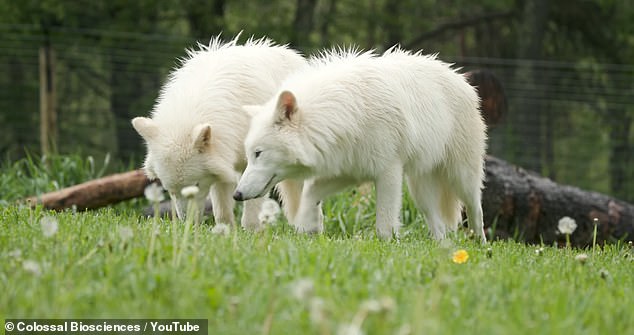The Rise of the Genetically Engineered Dire Wolves
In a groundbreaking development, scientists have successfully revived the dire wolf, a creature that once roamed North America over 12,000 years ago. This achievement marks the first instance of de-extinction, where extinct species are brought back to life using advanced genetic engineering techniques. The newly created dire wolves, named Romulus, Remus, and Khaleesi, have captured global attention for their impressive growth and unique characteristics.
A New Era in De-Extinction
Romulus and Remus, the two male pups, have grown significantly larger than typical gray wolves, weighing over 90 pounds each. This makes them approximately 20 percent bigger than their modern-day counterparts. Their sister, Khaleesi, is slightly smaller but still outperforms standard gray wolves by about 10 to 15 percent. These developments highlight the success of Colossal Biosciences, a Texas-based company specializing in bringing extinct species back to life.
The team at Colossal has been closely monitoring the pups’ progress, ensuring they meet all developmental milestones. They have transitioned from lab environments to outdoor spaces, where they exhibit natural behaviors such as running, playing, and social bonding. These activities are essential for their growth and development, allowing them to interact with their surroundings and each other.
Genetic Engineering and Development
The process of creating these dire wolves involved identifying and modifying specific genes in gray wolves to match those of ancient dire wolves. Scientists compared DNA from fossils to that of gray wolves, pinpointing 14 distinct genes. By making 20 changes in the gray wolf’s DNA, they were able to create a hybrid that closely resembles the extinct species.
This genetic engineering approach is part of Colossal’s broader mission to address ecological damage caused by human activity. The company aims to rehabilitate nature on a global scale, emphasizing the importance of restoring lost ecosystems and species.
Social Dynamics and Future Plans
As the pups grow, their social dynamics are becoming more apparent. Remus, despite being slightly smaller, has taken on an alpha role, displaying strategic leadership. Romulus, though physically larger, tends to follow Remus’s lead during interactions. This dynamic could shift as Khaleesi, the youngest pup, is introduced to her brothers.
The team is carefully planning the introduction of Khaleesi, starting with visits through fences to ensure social compatibility. The ultimate goal is to release all three pups onto a private preserve, where they can live as a functioning pack. This environment will allow them to develop naturally while being monitored by experts.
Challenges and Concerns
While the success of this project is remarkable, it also raises concerns among experts. Creating large carnivores, even in captivity, could have unintended consequences. There have been reports of fatal wolf attacks on humans, highlighting the potential risks associated with reintroducing such animals into the wild.
Experts warn that if these lab-made hybrids were to breed with wild populations, their altered genes could spread, disrupting existing ecosystems. This underscores the need for careful management and ongoing research to understand the long-term implications of de-extinction efforts.
Looking Ahead
Currently, the pups are eating an adult diet consisting of high-quality dog kibble, game-grade ground meat, and bones to help develop their hunting instincts. As they continue to grow, scientists will monitor their development closely, looking for signs that they may reach the size of their ancient ancestors.
Historically, dire wolves stood about three feet tall at the shoulder, reaching lengths of up to six feet, making them significantly heavier than today’s gray wolves. Fossil evidence suggests they could weigh between 130 and 150 pounds. While the final size of the pups remains uncertain, their growth trajectory is promising.
The revival of the dire wolf represents a significant step forward in the field of de-extinction. It not only showcases the potential of genetic engineering but also highlights the importance of addressing ecological imbalances. As scientists continue their work, the future of these genetically engineered creatures remains a topic of both excitement and caution.







